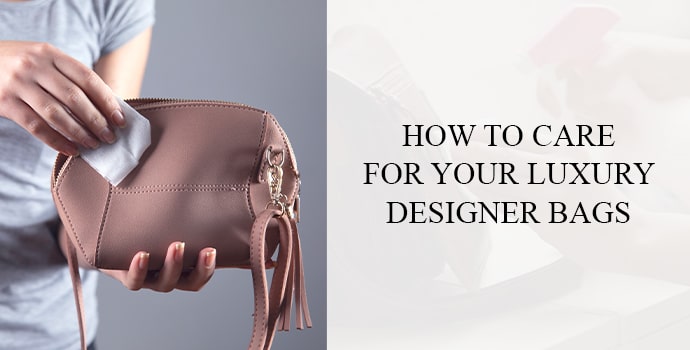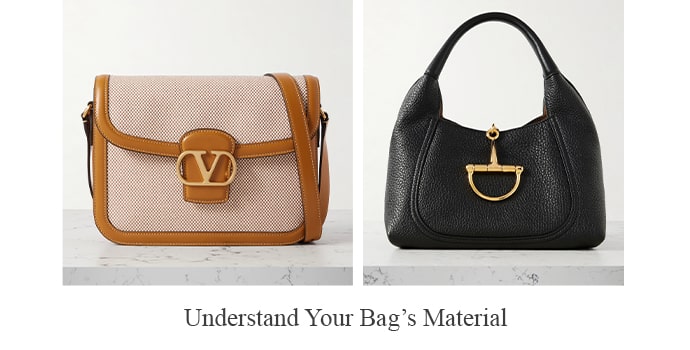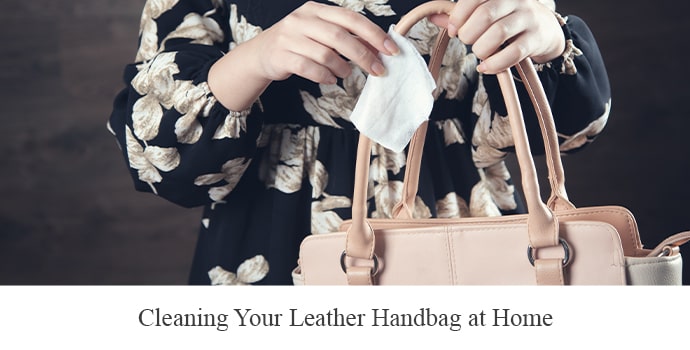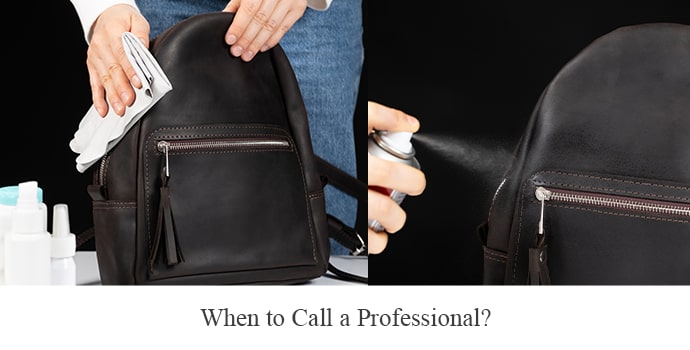June 14, 2025

Expensive designer handbags are an investment instead of goods only. These statement pieces, from Hermès Birkins and Louis Vuitton Monograms to the Chanel’s quilted classics, are designed for a lifetime and even handed over through generations. However, great responsibility is accompanied by great beauty. To maintain the style, durability and the value of your designer bag, proper maintenance is necessary.
To clean and maintain your luxury handbags, below is a complete guide to what you need if you are wondering how to keep your precious arm candy in the right condition, especially if it is made of leather.
1. Understand Your Bag’s Material

Spend some time to learn about the material before starting any cleaning routine. Foreign skins such as smooth calf, pebble leather, patent leather, lamb, and crocodile or python are few of the types of leather and finish available for designer bags.
Each type requires various strategies:
- Although it is soft and grand, smooth leather, such as Chanel’s lambskin, there is a risk of scratches.
- The leather that is granulated or pebbled is more flexible to last longer, is resistant, and longer lasting like Empreinte from Louis Vuitton.
- Although the patent leather is less porous and has a bright finish, it may be sticky or lose its color.
- Due to their fragility, foreign leather often requires expert care.
Always refer to the brand’s care card or if you are not sure, stop by the boutique for advice.
2. Daily Habits That Make a Big Difference

A. Storage Issues
- Never hang your bag by the straps or throw it in a corner. Always keep it straight in a dust bag, which is provided with most of the designer bags.
- Fill it with soft clothes, tissue paper, or bubble wrap to maintain the shape. Do not use newspapers as they can transfer ink.
- Store in a cold, dry place, away from the sun, which can fade the leather.
B. Rotate Your Bags
Using the same bag every day intensifies the wear and tears. Try to rotate between the bags to give each one a break and expand its lifetime.
C. Watch Where You Set It Down
Avoid placing your luxury bag on the floor – use hooks, bag holders, or even your lap. The ground can be moist, dirty or rough on the material.
3. Cleaning Your Leather Handbag at Home

A. Regular Wipe Down
Wipe your bag weekly using a soft, lint free fabric or microfiber towel. Gently remove dust, dirt and surface oil. For daily used bags, this habit prevents buildup.
B. Spot Cleaning
For small stains or marks:
- Moist a soft cloth with distilled water.
- Rubbing the area gently, as it can damage the leather.
- Let it dry naturally. Never use a hair dryer or direct heat.
C. Leather Cleaner and Conditioner
Use a leather cleaner that is specially designed for handbags-avoiding all-pest cleaner or domestic products. Apply with a soft cloth using soft circular movements. After cleaning, apply a leather conditioner to restore moisture, especially if the leather feels dry or rigid. Conditioning prevents cracking and keeps leather soft.
Important Tip: Test any product on an inconsistent area before full application.
4. What To Avoid
- Baby wipes or makeup remover wipes: They often contain alcohol and chemicals that can damage leather.
- Excess water: Leather is porous and can absorb water, causing stains.
- Direct sunlight or heater: heat causes discoloration, fading, and drying.
- Perfume or lotion contact: Alcohol and oil can permanently stain leather in these products.
- Plastic storage bags: They can trap moisture and cause mold or mildew.
5. Dealing with Common Leather Bag Problems
A. Scratches
The slight surface scratches can often be taken out of your finger or a clean, dried cloth. For deep scars, use a leather conditioner or give it to a professional.
B. Water Spots
Gently press with a clean, dried cloth and let it dry in the air. Do not try to dry it with heat.
C. Stains Inside the Bag
If you have a cloth lining in your bag, then turn it inside out (if possible) and gently wipe it with a vacuum or a damp cloth. For ink stains or makeup spills, it is best to consult a professional cleaner.
D. Color Transfer
Light colored bags are particularly prone to color transfer from jeans or dark clothing. To prevent this, avoid prolonged contact with denim and be alert to the rainy season. If the color transfer occurs, work quickly using a safe cleaner of leather.
6. When to Call a Professional

Despite your best efforts, some situations require specialist care. Find the professional handbag cleaning services if:
- The bag contains severe stains, molds, or discoloration.
- It’s made of exotic leather.
- You want to restore a vintage or pre-loved piece.
- The handbag requires large repairs (zippers, handles, lining).
Many luxury brands, such as Hermes and Chanel, offer in-house spas or restoration services. Alternatively, special luxury bag care can be done by a professional deep clean, coloring, and reviving your bag in its original glory.
7. Extra Tips to Maintain Luxury Appeal
- Use a bag organizer: Keeps the interior clean, adds structure, and prevents ink or cosmetic spills from ruining the lining.
- Apply a leather protector: some brands provide leather protectors for protection against water or stains, but always test first in a discreet location.
- Keep it fragrant-free: To freshen your bag, use baking soda or a pouch of active charcoal when not in use.
Final Thoughts
Detailed rituals are not required to take care of your luxury designer handbags – just a little stability, attention and correct tools. By including simple habits and to know when to treat versus when to call the pros, you’ll extend the life of your cherished accessories and preserve their resale value.
Remember, a well-cared-for designer bag not only looks stunning—it tells a story of appreciation and sophistication. Whether it’s your first-ever luxury buy or a treasured heirloom, treat it like the masterpiece it is.


